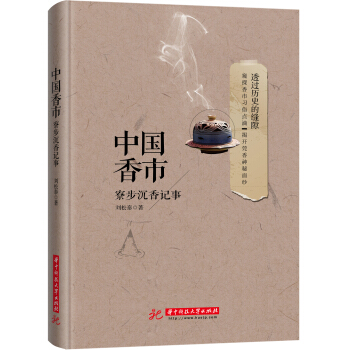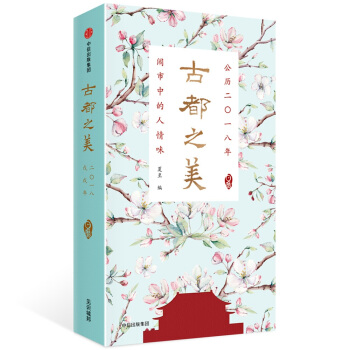![东学西传:国学与汉学 [Diffusing Eastern Learning Westward:Classics and Sinology]](https://pic.tinynews.org/12248927/5a30e523Nb094c471.jpg)

具体描述
内容简介
《东学西传:国学与汉学》是第四届北京地区对外汉语教学研究生学术论坛文集系列中的一本。《东学西传:国学与汉学》收录了北京语言大学的研究生和几位青年教师用英文写作的学术论文。全选题共分为四部分:生态对话、影评、文化研究、翻译经典著作。从这四个方面展示了这些青年学者的学术成果,为更多从事语言、文化研究和靠前交流的人们提供参考和借鉴。目录
EcologicalDialogueWoleSoyinka'sPhilosophyofEcocriticism
EcocriticisminChina
AnEcofeministExplorationofTheLeftHandofDarkness
InnovationsofNewConfuciansasaResponsetothe
GlobalEcologicalCrisis
AStudyofL/feofPifromthePerspectiveofEcocriticism
AnEcocriticalAnalysisofMoYan'sWorks
GoingbacktoZiran,orGoingbacktoDao?KenWilber'sIntegralEcology:
ANewPossibleApproachtowardsToday'sEcocriticisminChina
AnAnalysisofEcocriticismfromthePerspectiveofCulturalPoetics
EcologicalAestheticsandCulturalDiversityintheFilmArt-TakingtheChinese
FilmBackt01942andtheAmericanFilmLifeofPiasExamples
GrowingAnxietyandEcologicalWisdominBlessMe,Ultima
Nature-HumanIntegration:TheYin-YangPhilosophyinAng
Lee'sFilmLifeofPi
AStoryofKingfishers-InterpretationofWomenontheEdgefromthe
PerspectiveofEcofeminism
FilmReviews
AnnHuiandFilmswiththeSubjectof"ChineseElderly"
ChineseWomenFilmmakers:ANewProminentPowerinChinese
FilmIndustry
Escapingthe"Gaze":RepresentationsofChineseWomen
ImagesinAnnHui'sWorks
UniquePerspectiveofChineseFemaleDirectors
WesternFeminismandChineseFeministFilmsinthe1980s
CulturalStudies
ChineseCalendarCulture
AnAnalysisoftheAmericanizedMulanfroma
Cross-CulturaIPerspective
AComparisonoftheGrammarsandTextStructures
betweenEnglishandFrench
UsingProperChineseFilmsasTeachingMaterialsinTCFL
TranslatingClassics
TranslationandInterpretationoftheTaoistCreationMyth-Taking
theKeywordHundunasanExample
TranslatingtheClassicsinaModernContext-Reconstructingthe
MisinterpretedEssence
BibleTranslationinChinaandCross-CulturallnterpretationofReligionTakingtheChinese
TranslationofSodomandGomorrahDestroyedasanExample
TransmissionandReceptionofAncientClassicsintheModemWorld
-AnAnalysisoftheInterpretationandTranslationofTheAnalectsinChina
andtheWest
WhyDoWeTranslate?-RethinkingFunctionalTranslationTheory
Afterword
后记
精彩书摘
Two are one, life and death,Lying together like lovers in kemmer,Like hands joined together,Like the end and the way.Ai then uses the yin-yang symbol to name Estraven's culture. He draws the yin-yang symbol with a curve within the circle and then blacks the yin half of the symboland then he explains: "It is yin and yang. Light is the left hand of darkness... how didit go? Light, dark. Fear, courage. Cold, warmth. Female, male... Both and one." Aiactually summarizes the relationships of different pairs in the Winter culture as therelationship of yin and yang. such as light and dark, female and male. Here, it is obviousthat Le Guin employs the Taoist thinking and language to construct the Winter culture;as in Taoism, the relationship between yin and yang is mutually dependent, rather thanopposite or exclusive to each other. In Le Guin's translation ofLao Tzu : Tao Te Ching :A Book about the Way and the Power of the Way, we can see the relationship of differentforms of yin and yang and we can see that in the Taoist thinking, being and non-beingare not interpreted as opposites, but rather are mutually dependent, constructive, andtransformative ones. As the Winter culture is based on such a thinking, in this culture,dualistic divisions inherent in Western dualism are not seen.In Winter culture, the non-oppositional thinking is not merely applied to humanrelationship. As far as human nature is concerned, we find it also different from that inthe patriarchal anthropocentric cultures, in which nature is excluded from culture. Incontrast, in Winter. there is an intimate interaction between nature and culture. Here,nature is not subject to human exploitation and domination, but rather, it is an importantforce affecting both human nature and the construction of culture. In the novel, we cansee the inftuence of climate on human physiology: "Gethenian noses are prominent andnarrow. with constricted passages, well adapted to breathing subfreezing air." Besidesthis, nature is also one of the forces determining the everyday life of Gethenians, suchas the choice of means of transportation and business activities. In Winter, climateplays a part in the style of architecture. Due to the cold climate, "All the buildings arefantastically massive, deep-founded, weatherproof and waterproof." In the largest cityof Winter, Mishnory. architecture designs are made in compliance with the weatherconditions. In the sunny days. the city is "queer-looking", "all blank stone walls witha few narrow windows set too high, wide streets that dwarfed the crowds, street-lampsperched on ridiculous tall posts, roofs pitched steep as praying hands, shed-roofssticking out of house walls eighteen feet above ground like big aimless bookshelves-an ill-proportioned, grotesque city, in the sunlight." And yet, in winter, this citybecomes beautiful as it is built for winter: "In winter, with those streets filled ten feetup with packed, hard-rolled snow, the steep roofs icicle-fringed, sleds parked under theshed-roofs, narrow window-slits shining yellow through driving sleet, you could seethe fitness of that city, its economy, its beauty." We can see from the novel that in LeGuin's construction, nature, to be exact, the climate, is not merely the environment ofhuman beings or the background of human activities, but rather, it plays an active rolein different fields oflife of Gethenians.Language is another important aspect reflecting the culture-nature relationship,which can record the past consciousness and shape the future consciousness of apeople. It is another channel for us to learn about the human-nature relationship of aculture. In the Winter language system, expressions such as "mankind can conquerthe earth" do not exist. We can see the presence of nature in the language and hencethe culture, For example, in the language of Karhide, there exists more than 60 wordsdescribing the categories, stages, and characteristics of snow. There are many wordsdescribing different states of snow-falling and ice. There are also more than 20 wordsthat are related to the temperature, the scale ofwind, and rain. We can see that nature isdescribed in depth and various aspects of weather are included in the language, whichdemonstrate the attention and respect of Gethenians for natural phenomena. We cansee, in the language, nature is not treated as an undifferentiated whole, but rather, thedetails of changes and differences contained in nature itself are represented.According to Westem dualism, mathematics belongs to the category of reason,wluch is above nature. However, on the planet known as Winter, nature is closelylinked to mathematics. For example, numbers like 13, 26, 53, which are associated withthe cycle of the moon and the physical cycle of Gethenians, are often taken as the unitsof measurement. This forms a contrast to the anthropocentric culture, in which natureand body are debased.Gethenians, unlike people who have an arrogant attitude towards nature in theanthropocentric cultures, are modest and humble in front of nature.……
用户评价
拿到《东学西传:国学与汉学》这本书,我抱着一种探索未知的好奇心。我对国学素有耳闻,但总觉得它离我有些遥远,更不用说去理解它如何在海外生根发芽了。这本书以一种非常引人入胜的方式,为我揭示了国学“走出去”的漫长而精彩的故事。作者不仅仅是罗列事实,而是将“东学西传”的过程,描绘成一场充满智慧与挑战的文化征程。他深入剖析了不同时期、不同国家汉学研究的特点和贡献,让我看到了汉学研究并非铁板一块,而是随着历史的变迁,不断演变和发展的。我尤其被书中关于“西方学者如何理解中国传统政治哲学”的章节所打动。孔子的“仁”和“礼”,在西方学者那里,被赋予了与西方伦理学、政治学截然不同的解读,这种跨文化的理解,既有误读,也有新创,充满了张力。这本书让我深刻地体会到,国学在异域的传播,并非是简单的复制,而是一种充满创造性的转化。西方汉学研究,在研究中国文化的同时,也在用自己的思想体系去审视、去构建,从而形成了独特的汉学视角。我特别欣赏作者在梳理历史脉络的同时,也关注了不同汉学流派之间的思想争鸣。这种学术的碰撞,恰恰是文化生命力的体现。它让我看到,汉学研究并非是固步自封的,而是充满活力和开放性的。通过这本书,我不仅对汉学有了更清晰的认识,更重要的是,它让我对中国文化的价值和影响力有了全新的理解。我开始思考,在当今全球化的时代,我们如何才能以更积极主动的态度,去传播我们的优秀传统文化,并从中汲取养分,实现自我超越。
评分《东学西传:国学与汉学》这本书,简直是一次令人惊喜的发现。我一直对中国传统文化充满好奇,但总觉得国学的内容太过庞杂,难以找到一个切入点。而“汉学”这个词,更是让我觉得既熟悉又陌生。这本书恰恰弥补了我的知识盲区。作者以一种极为宏观的视角,勾勒出了国学在世界范围内的传播轨迹,以及“汉学”这一学科是如何在异域文化土壤中孕育而成的。我尤其被书中关于“西方如何理解中国古代的政治思想”的讨论所吸引。当中国的“治大国如烹小鲜”等理念,被翻译到西方语境时,会产生怎样的解读和碰撞?作者通过大量的历史案例,展现了这种跨文化理解的复杂性和丰富性。我被书中对不同时期、不同国家汉学研究的细致梳理所打动。从早期的传教士,到近代著名的汉学家,他们各自的研究方法和学术成果,共同构成了汉学研究的辉煌篇章。我尤其欣赏作者在分析具体汉学家的研究成果时,所展现出的深度和广度。他能够将复杂的学术理论,转化为普通读者能够理解的语言,并且在论述中,始终保持着对历史事实的尊重。这本书让我认识到,国学并非是仅仅在中国流传的“地方性知识”,而是具备全球视野和国际影响力的普适性智慧。汉学研究,正是这种影响力的体现,它既是中国文化走向世界的重要窗口,也是世界理解中国文化的重要桥梁。我非常赞赏作者的叙事方式,它既有学术的严谨,又不失文学的感染力,让我在阅读过程中,如同置身于一场精彩的文化探索之旅。
评分我最近有幸拜读了《东学西传:国学与汉学》一书,这本书彻底改变了我对国学和汉学的看法。在此之前,我对国学总有一种“高高在上”的感觉,觉得那是书斋里的学问,与我的生活相去甚远。而汉学,更是觉得神秘莫测,似乎与我们普通人无关。但这本书,以一种极为平易近人的方式,将国学与汉学之间的联系,以及它们在世界范围内的传播,描绘得生动而具体。作者并没有上来就进行艰涩的学术论述,而是通过大量的历史细节和生动的故事,将“东学西传”这个宏大的主题娓娓道来。我尤其被书中关于早期传教士如何将中国经典翻译成西方语言的章节所吸引。他们付出的艰辛努力,以及在翻译过程中所遇到的种种挑战,都让我深切体会到文化传播的艰难与伟大。更重要的是,作者深入剖析了这些翻译和研究,是如何在西方社会引起反响,如何影响了西方启蒙思想的发展,甚至在某种程度上,重塑了西方人对中国文化的认知。我被书中关于“西方汉学如何重新解读中国哲学”的讨论所深深吸引。例如,一些在中国本土被视为政治哲学或伦理学的思想,在西方学者的研究中,被赋予了形而上学甚至宗教的色彩。这种“错位”的解读,反而引发了我对中国自身文化更深层次的思考。这本书让我认识到,国学并非是固步自封的,它在与世界的对话中,获得了新的生命力,而汉学,正是这种对话的见证者和推动者。我非常欣赏作者在论述中,所展现出的严谨态度和创新视角。他能够将纷繁复杂的历史线索,梳理得井井有条,并且在其中注入深刻的见解。这本书让我对国学和汉学都有了全新的认识,也让我对中国文化的国际影响力有了更直观的感受。
评分《东学西传:国学与汉学》这本书,犹如一位睿智的长者,在我眼前娓娓道来一段波澜壮阔的文化史诗。我一直觉得,国学是中国文化的根基,但如何在世界范围内传播,又以何种面貌被接纳,一直是我想深入了解的课题。这本书的出现,给了我一个极其清晰的脉络。作者对于“东学西传”的定义,跳出了单纯的知识转移,而是将其视为一种文化生态的互动,一种思想的对话。他详细阐述了,当中国古典思想、哲学、文学等“东学”抵达西方时,是如何与西方已有的思想体系发生碰撞,进而产生新的理解和阐释,最终形成“汉学”这一独特的学术领域。我被作者对不同时期、不同国家汉学研究的细致梳理所吸引。从早期传教士的翻译,到近代学者的系统研究,再到当代学者对中国文化的多元解读,每一个阶段都充满了故事和智慧。我尤其对书中关于“西方汉学如何重塑中国古典文本的意义”的讨论感到着迷。例如,某些在中国本土被视为世俗化的文本,在西方汉学家的研究中,被赋予了哲学或宗教层面的深度解读。这种“异域视角”,有时反而能够帮助我们更清晰地看到自己文化的某些侧面。这本书让我认识到,国学并非是封闭的,而是开放的,它在与世界的对话中,获得了新的生命力。汉学研究,正是这种对话的产物,它既是中国文化走向世界的重要窗口,也是世界理解中国文化的重要载体。我非常欣赏作者在论述中,所展现出的宏大视野和精辟分析。他能够将复杂而漫长的历史进程,梳理得条理清晰,并且在其中注入深刻的见解。这本书不仅让我增长了知识,更重要的是,它拓宽了我的思维,让我对文化交流的本质有了更深刻的理解。
评分《东学西传:国学与汉学》这本书,为我打开了一扇理解中国文化在世界舞台上地位的窗户。我一直觉得国学是中国的根基,但它如何与世界发生联系,又如何被世界所理解,一直是一个模糊的概念。这本书以其独特的视角,将“东学西传”的过程,描绘成一幅波澜壮阔的文化画卷。作者并没有停留在对中国古典文本的简单罗列,而是深入探讨了“东学”在西方语境下的“转化”和“再生”。我尤其被书中关于“西方汉学如何重塑中国古典文本的意义”的讨论所吸引。例如,某些在中国本土被视为世俗化的文本,在西方汉学家的研究中,被赋予了哲学或宗教层面的深度解读。这种“异域视角”,有时反而能够帮助我们更清晰地看到自己文化的某些侧面。我被书中对不同时期、不同国家汉学研究的细致梳理所打动。从早期传教士的翻译,到近代学者的系统研究,再到当代学者对中国文化的多元解读,每一个阶段都充满了故事和智慧。我非常欣赏作者在分析具体汉学家的研究成果时,所展现出的深度和广度。他能够将复杂的学术理论,转化为普通读者能够理解的语言,并且在论述中,始终保持着对历史事实的尊重。这本书让我认识到,国学并非是仅仅在中国流传的“地方性知识”,而是具备全球视野和国际影响力的普适性智慧。汉学研究,正是这种影响力的体现,它既是中国文化走向世界的重要窗口,也是世界理解中国文化的重要桥梁。我非常赞赏作者的叙事方式,它既有学术的严谨,又不失文学的感染力,让我在阅读过程中,如同置身于一场精彩的文化探索之旅。
评分《东学西传:国学与汉学》这本书,为我打开了一个全新的认知维度。一直以来,我总觉得国学是中国独有的瑰宝,但它如何在世界范围内产生影响,我缺乏清晰的概念。这本书以其深刻的洞察力,为我勾勒出了国学“西渐”的宏大画卷。作者并没有停留在对中国古典文本的简单介绍,而是深入探讨了“东学”在西方语境下的“转化”和“再生”。我特别被书中对“汉学”概念的界定所吸引。它不仅仅是简单的“中国研究”,而是包含了一种独特的学术传统和研究方法,它既是对中国文化的挖掘,也是对中国文化的一种“再创造”。我被书中对不同时代、不同国家汉学家的介绍所吸引,他们各自的研究领域和学术观点,共同构成了汉学研究的丰富图景。我尤其对书中关于“西方学者如何理解中国古代的文学艺术”的讨论印象深刻。他们从不同的文化视角出发,对中国诗词、绘画等进行了独到的解读,这些解读有时甚至能引发我们对自身文化的新的思考。这本书让我意识到,国学并非是静止的,而是动态的,它在与不同文化的交流中,不断焕发出新的生机。汉学研究,正是这种交流的产物,它既是中国文化走向世界的重要途径,也是世界理解中国文化的重要窗口。我非常欣赏作者在论述中,所展现出的宏观视角和细腻笔触。他能够将复杂的历史事件和学术理论,梳理得清晰明了,并且在其中注入深刻的见解。这本书让我受益匪浅,它不仅增长了我的学识,更重要的是,它拓宽了我的视野,让我对文化交流的意义有了更深刻的理解。
评分这次偶然翻阅到《东学西传:国学与汉学》这本书,简直像是开启了一扇通往另一个世界的门。我一直对中国传统文化怀有浓厚的兴趣,但总觉得隔着一层纱,难以窥其精髓。这本书的出现,恰好弥补了我在这方面的知识断层。它并没有一开始就抛出晦涩难懂的学术理论,而是从一个非常宏观的视角,带领我审视国学在世界范围内的传播轨迹。我尤其被作者对“东学西传”这个概念的深入剖析所吸引。它不仅仅是指知识的单向输出,更是一种文化观念、思想体系的互动与碰撞。我一直在思考,西方汉学研究是如何在吸收中国传统文化的同时,又赋予其新的解读,甚至在某些方面反哺了中国自身的文化认知?这本书给我提供了一个非常好的切入点。它让我看到了,国学并非是僵化的古籍堆砌,而是具备强大生命力,能够与不同文明对话,并从中汲取养分,实现自我革新的。作者在论述中,穿插了大量鲜活的历史案例,比如传教士对儒家经典的翻译和传播,以及这些翻译在欧洲启蒙运动中所扮演的角色,这些都让我对“东学西传”有了更具体、更生动的理解。我特别欣赏作者对于“汉学”定义的探讨,它既包括了对中国文本的字面理解,也包含了对其背后文化语境的深入挖掘。这种细致入微的分析,让我认识到,真正的汉学研究,绝非简单的“知其然而不知其所以然”。它需要研究者具备跨文化的视野和深厚的历史功底,能够穿梭于不同时代、不同思想体系之间,寻找共鸣与差异。我甚至在想,这种跨文化的理解,对于我们当下如何在全球化浪潮中保持文化自信,也具有重要的启示意义。这本书的叙事方式也非常吸引人,它并非枯燥的学术论文,而是更像一场引人入胜的文化探索之旅。作者的语言流畅而富有感染力,引导着读者一同去感受国学西传的魅力,去体会不同文化碰撞时的火花。它让我从一个旁观者的角度,去重新审视国学在世界历史长河中的地位和影响,这是一种全新的视角,让我受益匪浅。
评分阅读《东学西传:国学与汉学》这本书,我深切地感受到了一种历史的回响,仿佛置身于那个跨越时空的文化交流现场。我一直对“汉学”这个词语有着模糊的认知,总觉得它与我们日常接触到的国学有所区别,又难以言明。这本书恰好解开了我的困惑。作者以精妙的笔触,勾勒出了汉学研究如何在西方生根发芽、枝繁叶茂的过程。他不仅梳理了重要的汉学家及其研究成果,更重要的是,他深入剖析了汉学研究背后的时代背景和思想动机。我被作者对早期西方汉学家的描述所吸引,他们是如何克服语言障碍,如何理解中国古代哲学思想的?这其中的艰难与不易,以及他们所展现出的非凡毅力,都令人动容。我尤其对书中关于“西方人如何理解孔子”的论述印象深刻。不同的文化语境,造就了不同的解读视角,有些解读甚至与中国本土的理解大相径庭,但这恰恰反映了文化交流的复杂性和丰富性。这本书让我意识到,汉学并非仅仅是“中国学”,它是一种在异域文化土壤中孕育出的,对中国文化的反思与再创造。它既有对中国传统的继承,也有对中国传统的超越。我特别欣赏作者在分析具体汉学家研究时,所展现出的严谨态度和深度洞察。他能够将复杂的学术理论,转化为普通读者能够理解的语言,并且在论述中,始终保持着对历史事实的尊重。通过这本书,我重新认识了汉学研究的价值,它不仅是学术研究,更是文化理解的桥梁,是促进不同文明之间相互认识的重要途径。我甚至开始反思,在当下的语境下,我们如何才能更好地与世界分享我们的优秀传统文化,又如何才能以更开放的心态,去理解和学习其他文明的智慧。这本书的启发性,远超我的想象。它让我看到了国学在世界舞台上的另一种可能性,一种在碰撞与融合中不断发展的生命力。
评分《东学西传:国学与汉学》这本书,为我提供了一个全新的视角来审视中国文化。我一直觉得国学博大精深,但如何将其价值传递给世界,又如何理解世界对中国文化的认知,是我一直思考的问题。这本书恰恰解答了我的疑惑。作者以“东学西传”为主线,描绘了中国传统文化如何一步步走向世界,以及“汉学”这一学科是如何在这一过程中形成的。我尤其被书中关于“西方学者如何解读中国古代哲学”的章节所吸引。当儒家、道家的思想,经过西方学者的翻译和阐释,呈现出与中国本土截然不同的面貌时,这本身就充满了有趣的张力。这种“异域视角”,有时反而能够帮助我们更清晰地看到自己文化的某些独特之处。我被书中对不同时期、不同地域汉学研究的梳理所打动。从早期欧洲传教士的艰难翻译,到近代学者的系统研究,再到当代学者对中国文化的多元解读,每一个阶段都充满了故事和智慧。我非常欣赏作者在分析具体汉学家的研究时,所展现出的严谨态度和深度洞察。他能够将复杂的学术理论,转化为普通读者能够理解的语言,并且在论述中,始终保持着对历史事实的尊重。这本书让我认识到,国学并非是封闭的,而是开放的,它在与世界的对话中,获得了新的生命力。汉学研究,正是这种对话的产物,它既是中国文化走向世界的重要窗口,也是世界理解中国文化的重要载体。我甚至开始反思,在当今全球化的时代,我们如何才能以更开放的心态,去传播我们的优秀传统文化,并从中汲取养分,实现自我超越。
评分《东学西传:国学与汉学》这本书,为我提供了一个理解中国文化在世界范围内传播的全新视角。我一直对国学怀有敬意,但对于它如何在海外生根发芽,以及“汉学”这一学科的形成过程,一直缺乏清晰的认知。这本书以其深刻的洞察力,为我勾勒出了国学“西渐”的宏大画卷。作者以“东学西传”为主线,并非简单地讲述知识的转移,而是深入探讨了中国文化如何与西方文明发生互动,并在这一过程中,产生了新的解读和发展。我尤其被书中关于“西方学者如何理解中国古代的文学与哲学”的章节所吸引。当中国的“诗歌”和“哲学”被翻译到西方语境时,会产生怎样的化学反应?作者通过大量的历史案例,展现了这种跨文化理解的复杂性和丰富性。我被书中对不同时期、不同国家汉学研究的细致梳理所打动。从早期传教士的翻译,到近代学者的系统研究,再到当代学者对中国文化的多元解读,每一个阶段都充满了故事和智慧。我非常欣赏作者在分析具体汉学家的研究成果时,所展现出的深度和广度。他能够将复杂的学术理论,转化为普通读者能够理解的语言,并且在论述中,始终保持着对历史事实的尊重。这本书让我认识到,国学并非是仅仅在中国流传的“地方性知识”,而是具备全球视野和国际影响力的普适性智慧。汉学研究,正是这种影响力的体现,它既是中国文化走向世界的重要窗口,也是世界理解中国文化的重要桥梁。我非常赞赏作者的叙事方式,它既有学术的严谨,又不失文学的感染力,让我在阅读过程中,如同置身于一场精彩的文化探索之旅。
相关图书
本站所有内容均为互联网搜索引擎提供的公开搜索信息,本站不存储任何数据与内容,任何内容与数据均与本站无关,如有需要请联系相关搜索引擎包括但不限于百度,google,bing,sogou 等
© 2025 book.idnshop.cc All Rights Reserved. 静思书屋 版权所有

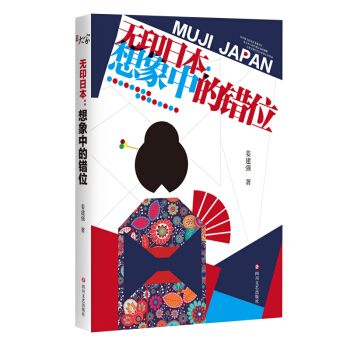
![人文中国书系-中国绘画(英) [Chinese Painting] pdf epub mobi 电子书 下载](https://pic.tinynews.org/12249170/59f29a14Ndfbe1eac.jpg)
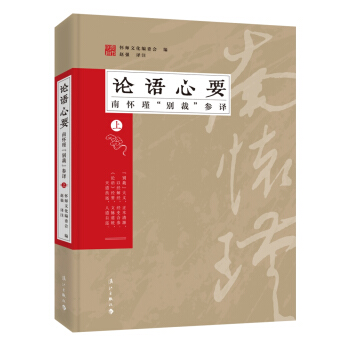
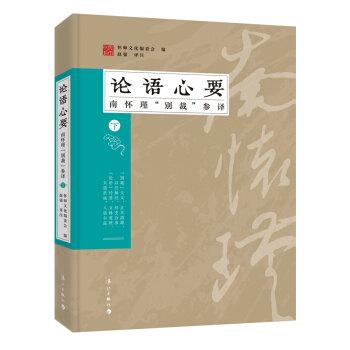

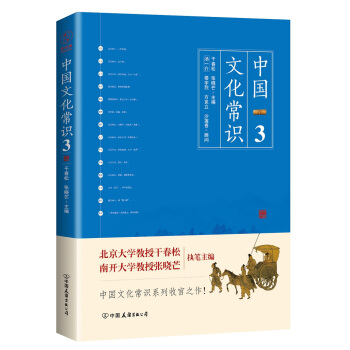
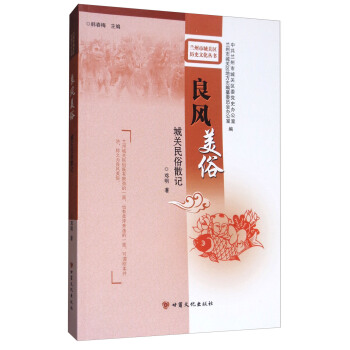



![中外文化与文论(第36辑) [Cultural Studies and Literary Theory] pdf epub mobi 电子书 下载](https://pic.tinynews.org/12250759/5a38cf54Nae629b9a.jpg)
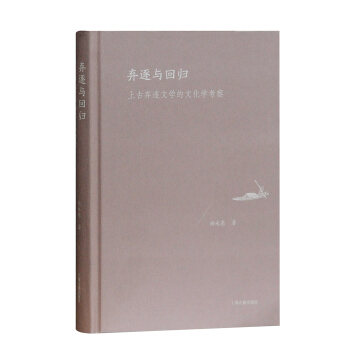
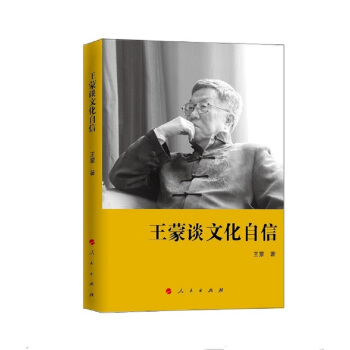
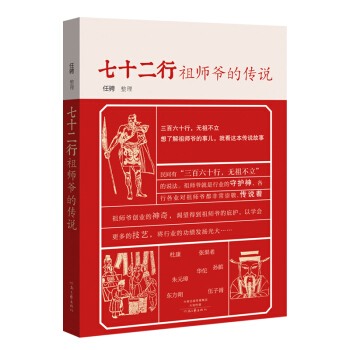


![新编中国文化产业政策法规与典型案例评析 [Chinese Cultural Industry Policies Regulations and Typical Cases (New Edited)] pdf epub mobi 电子书 下载](https://pic.tinynews.org/12251785/5a38cf3fN03cc890c.jpg)
